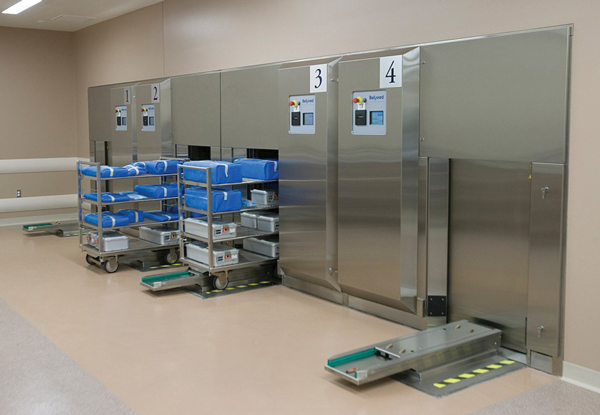The Joint Commission seeking comments on proposed new IC requirements
Editor's Note The Joint Commission, on June 21, announced that there is still time to comment on its proposed new Infection Control (IC) chapter requirements for hospitals and critical access hospitals. The goal of revising the chapter is to align the IC standards and elements of performance more closely with…
Bioburden levels during total joints in ORs complying with US ventilation specifications
Editor's Note This study from Baptist Health-Fort Smith, Arkansas, finds that the low-energy consumption ventilation system specified for in US operating rooms produces different zones of sterile protection from airborne microbe carrying particles (MCP) during total joint arthroplasties. The predominant source of MCPs are from personnel in the OR—an average…
Continued increases in HAIs during second year of COVID-19
Editor's Note This study from the Centers for Disease Control and Prevention, Atlanta, finds that standardized infection ratios (SIRs) were significantly higher during COVID-19 than during the prepandemic period, and the incidence of healthcare associated infections (HAIs) was elevated during periods of high COVID-19 hospitalizations. The analysis revealed elevated incidence…
Use of AI to predict risk of HAIs
Editor's Note This study led by researchers at the Mayo Clinic Arizona finds that a healthcare associated infection (HAI) risk prediction artificial intelligence (AI) model can estimate individualized risk of infection by taking into account a patient’s clinical features and features of similar patients. The model was trained on 38,327…
CDC: Update on COVID-19 transmission at 2023 EIS Conference
Editor's Note The Centers for Disease Control and Prevention (CDC), on May 26, released an update on the spread of COVID-19 at its 2023 Epidemic Intelligence Service (EIS) Conference in Atlanta in April. The conference was attended by some 1,800 in-person attendees. A rapid assessment team was gathered to survey…
The Joint Commission seeking comments on proposed new infection control requirements for hospitals, critical access hospitals
Editor's Note The Joint Commission, on May 24, announced that it is seeking comments on new infection control (IC) requirements for hospitals and critical access hospitals on preparedness for high-consequence diseases or special pathogens. These new requirements will replace the current standard IC.01.06.01 on preparing for an influx of potentially…
Using human-AI collaboration to monitor PPE donning, doffing
Editor's Note This Australian study compares the accuracy of monitoring personal protective equipment (PPE) donning and doffing between an artificial intelligent (AI) machine collaborating with a remote buddy support system and an onsite buddy. The researchers conducted a pilot simulation study with 30 procedural scenarios (15 donning and 15 doffing)…
WHO launches International Pathogen Surveillance Network
Editor's Note The World Health Organization (WHO) and its partners, on May 20, launched the International Pathogen Surveillance Network (IPSN) to prevent and detect infectious disease threats before they become epidemics or pandemics. The network provides a platform for helping countries and regions improve systems for collecting and analyzing samples,…
New borescope training model improves SPD personnel knowledge, complex skills
Editor's Note This pilot study by epidemiologist Cori L. Ofstead, MSPH, and colleagues finds that a new borescope training model improves sterile processing department (SPD) personnel mastery and retention of complex skills. A total of nine certified SPD personnel were involved in the study. Training focused on borescope visual inspection…
The role of infection prevention when auditing SPD

Infection preventionists (IPs) play a vital role in healthcare, especially in the sterile processing department (SPD), where preventing infection and cross-contamination is paramount. As infection prevention advocates, SPD personnel are responsible for ensuring that surgical instruments and other medical devices are properly sterilized and free of harmful microorganisms before use.…

 Free Daily News
Free Daily News